Colorado summers are short-lived but glorious. Mountainsides of quaking green aspen leaves may first come to mind, but meadows and slopes dotted with multicolored blossoms might win the beauty pageant. Just like their wild counterparts, gardens in Denver and beyond can bring you joy from spring until fall. Native plants abound, but there are also nearly-natives and non-invasive flowers from more distant lands that fill high plains, mountain, and desert gardens with color through all summer months.
This collection of perennial plants will bring timeless beauty to the garden for years, but that’s not all. Many of these flowers are irresistible to pollinating insects and the lively hummingbirds that are as much a Colorado summer staple as Palisade peaches. Considering the altitude and climate differences dotting this great rectangle as well as our semi-arid conditions in general, most of the following flowers are suited for a wide range of USDA hardiness zones and are perfect for low-water landscapes.
Read more: 15 Best Purple Plants For Your Flower Garden
Chocolate Flower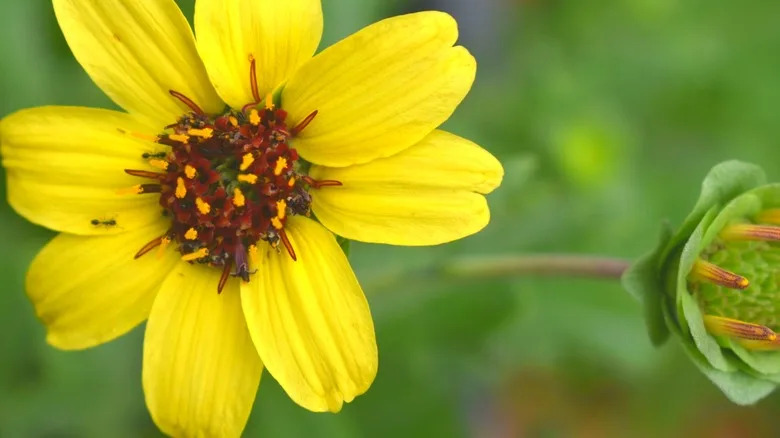
A yellow petaled chocolate flower is open next to a budding one. – Sandra Sapp/Shutterstock
Let’s start with something sweet. Chocolate flower (Berlandiera lyrata) is a sunny yellow with a chocolate-brown center a bit similar to a black-eyed susan. Able to tough out zones 4 to 10, chocolate flowers can brighten nearly any yard in the state from June until first frost. The coolest thing about this member of the daisy family is its rich, chocolaty scent. When you’re not burying your own nose in these darlings, they’ll provide food for butterflies, birds, and bees but not deer. Plant them in well-draining soil in full or partial sun.
Eaton’s Firecracker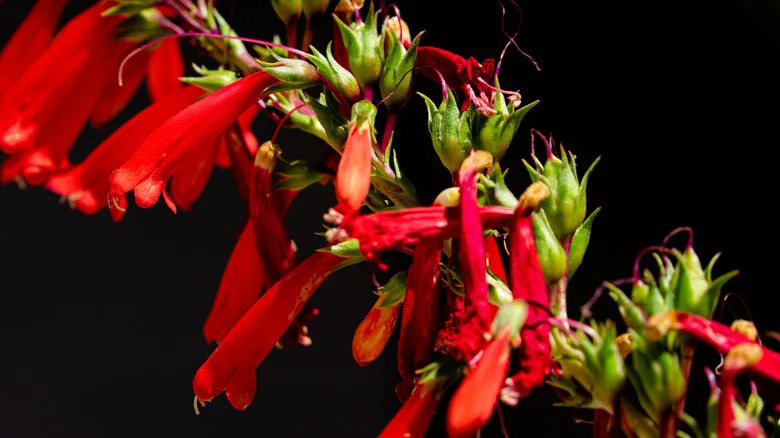
Bright red tubes of Eaton’s firecracker catch sunlight. – Eric Mischke/Getty Images
Mother nature must have read a hummingbird’s wish list when she created Eaton’s firecracker (Penstemon eatonii). These brilliant blooms that are also known as will transform your space into a hummingbird heaven from late spring to late summer. Its orangey-red tubular flowers are ideal for hummingbirds’ long, delicate beaks. All types of penstemon handle drought brilliantly and are a fave among these birds and insect pollinators, but it’s their extended flowering time that earns them special mention. Snipping stalks before seeds form can prolong flowering, as well. Plant them in full sun to part shade in well-draining soil. They’ll thrive in zones 3 to 7.
Prairie Coneflower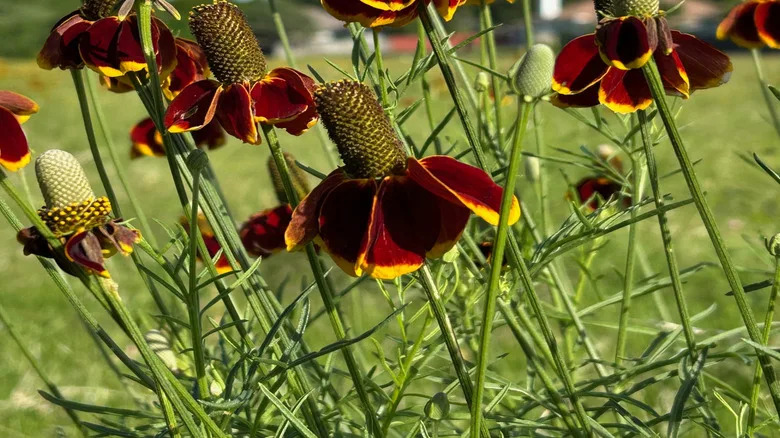
A cluster of orange and yellow prairie coneflowers grow in the sun. – CR Moore/Shutterstock
Tall, distinctive prairie coneflowers (Ratibida columnifera) will add height and whimsy to your Colorado flower beds from early to late summer. This native perennial with a curiously elongated center can grow up to 2 feet tall. The yellow or red-and-yellow blossoms are a butterfly favorite and a fun choice if you’re starting a pollinator garden. Plus, they don’t interest deer. Prairie coneflowers are tough enough to weather very dry conditions and poor soil. Plant them in zones 4 to 9 in full sun.
Mojave Sage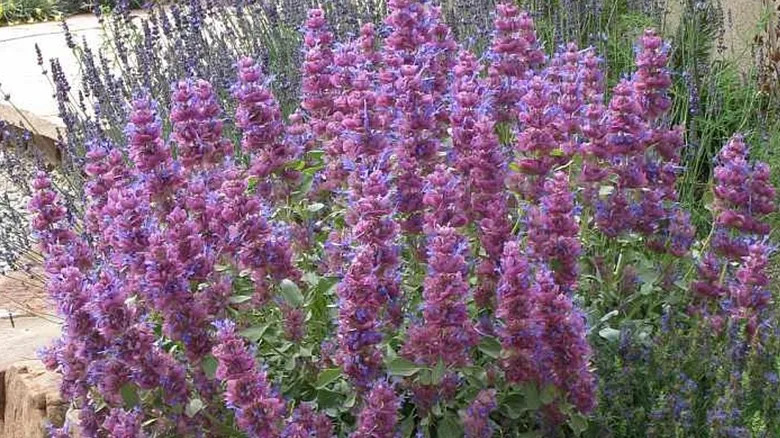
Puffy purple tufts of Mojave sage grow in a garden. – California Floral Nursery
Mojave sage (Salvia pachyphylla) goes by several common names, such as rose sage, blue sage, and the more poetic one, mountain desert sage. But its most telling name is giant purple sage. This California native is the marathoner of bloomers with flowers lasting up to 14 weeks, from late June to September. Mature plants (at 2 to 3 years) can reach heights and widths of 2 and 3 feet. They are among the most drought-tolerant plants on our list, and they perform well in poor, clay soil as long as it’s well-draining. Grow Mojave sage in zones 5 to 10 in full sun.
Hummingbird Trumpet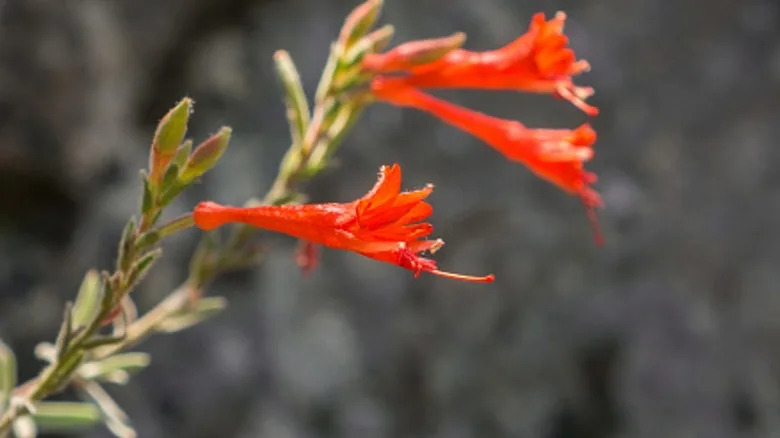
A few hummingbird trumpet blossoms glow orange in the sunlight. – Sundry Photography/Getty Images
The name hummingbird trumpet (Zauschneria garrettii) nearly says it all. The only hummingbird-attracting aspect about this flower that’s not given away in the name is its flame red color. This summer-to-fall bloomer has a few other names like California fuchsia and firechalice. It’s an enthusiastic grower and can become a bit unruly. You’ll have the easiest time controlling it if you limit its water. Plant this flower in any type of soil that’s well draining. It loves full sun but can take partial shade. Hummingbird trumpet is hardy in zones 3 to 8.
Meadow Sage
Reddish purple meadow sage blooms in a garden. – American Meadows
Bees love meadow sage (Salvia nemorosa), and you will, too. Meadow sage isn’t a native to North America and has shown signs of invasiveness in Washington, where you definitely shouldn’t grow it. But in Colorado, meadow sage makes a striking addition to any flower garden, where it will show off purplish-red spiky flowers from June to September. Meadow sage grows up to 2 feet wide and 3 feet tall. Plant meadow sage in zones 4 through 8 in full sun to part shade. It tolerates a variety of soil types as long as they’re well-draining.
Columbine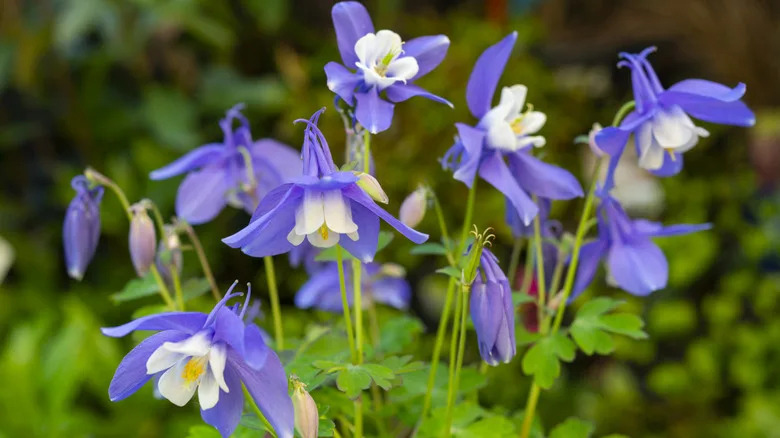
White and purple columbine grow in a garden. – Photos By R A Kearton/Getty Images
As you tread lightly along a mountain trail in the summer, catching a glance of a wild-blooming columbine is like a gift. Columbines (Aquilegia spp.) are Colorado’s state flower. Columbines are hardy in zones 3 to 9, and they’re resistant to deer but delightful to pollinators. Columbines flower from early to mid-May through June, but deadheading can extend the bloom time by up to 6 weeks. They manage well in lots of soil types and are moderately drought tolerant. Plant columbines in full to partial sun, and yours may grow up to 3 feet tall!
Adriatic Bellflower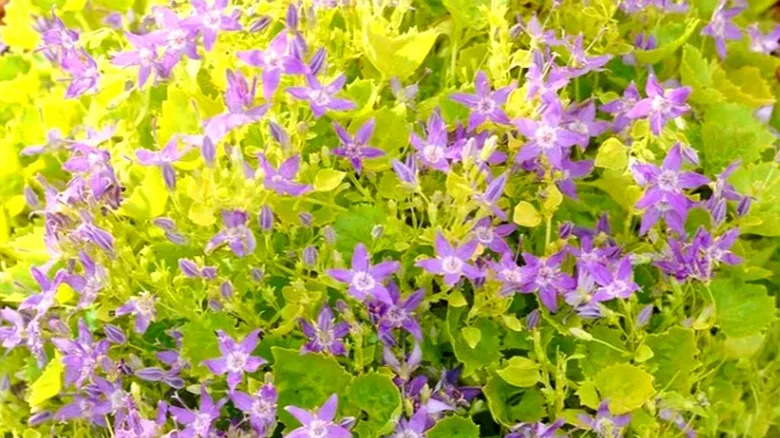
Purple Adriatic bellflowers bloom against light green foliage. – High Country Gardens
Although it’s not native to North America, the Adriatic bellflower (Campanula garganica) will deliver on color all season long. This bluish-purple-flowered plant evolved clinging to rocky hillsides and dry grasslands in Italy, making it a great fit for a Colorado garden. It’s a low-growing plant that works well as a groundcover; each plant can spread up to 3 feet. Plant Adriatic bellflower in full or partial sun in zones 4 to 7.
Coral Bells
Red-flowered coral bells bloom in a garden. – Wirestock/Getty Images
Both the flowers and the foliage make coral bells (Heuchera) worthy of tucking into your flower beds. These North American natives show off tiny, long-blooming flowers on graceful stems that appear in white, pink, coral, or red. Bees and other pollinators are frequent visitors to the blossoms. Coral bells grow between 6 and 20 inches in height, and they thrive in full or partial sun in zones 3 to 9. They crave soil with a lot of organic matter and are not as drought tolerant as some of the other plants mentioned here.
Echinacea ‘Cheyenne Spirit’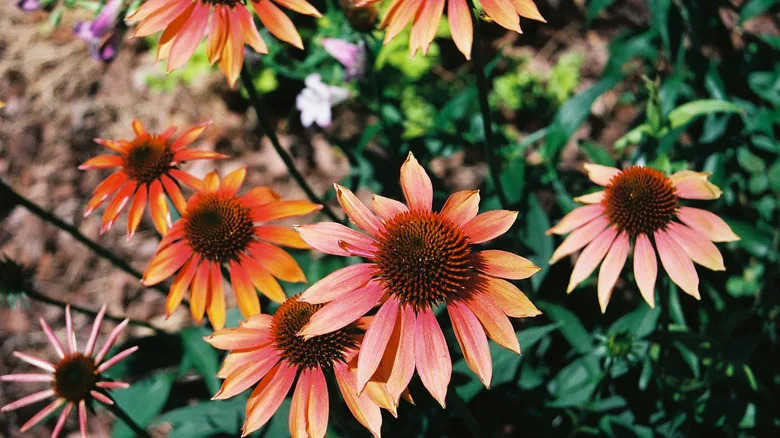
Multicolored ‘Cheyenne Spirit’ echinacea bloom in a garden. – Cheryl Ann Meola/Shutterstock
Different from the purple-petaled coneflowers we’re used to, Echinacea ‘Cheyenne Spirit’ (Echinacea purpurea ‘Cheyenne Spirit’) produces blooms in a lottery of colors, from gradients of yellow to red and purple. These North American native beauties appear in June and keep going until fall. They grow to 3 or 4 feet in height and are tasty treats for birds, butterflies, and bees. Plant ‘Cheyenne spirit’ in full sun and loamy, sandy soil. They are hardy in zones 4 to 9.
Sulfur-Flowered Buckwheat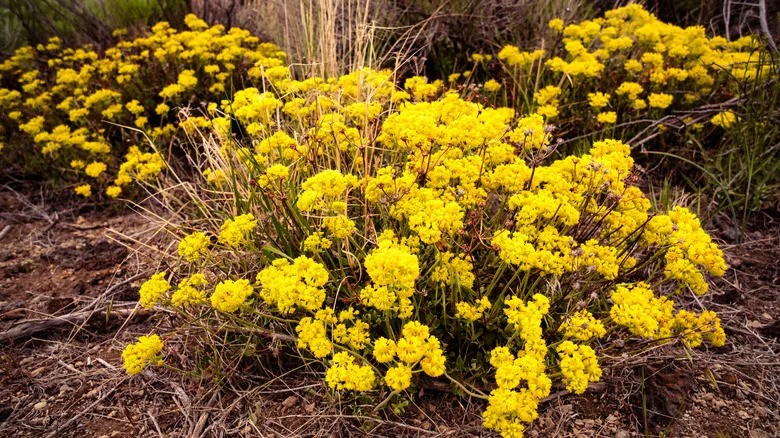
Bright yellow sulfur-flowered buckwheat blooms in a large patch. – Geartooth Productions/Shutterstock
Colorado’s climate throws some major extremes at its residents, and sulfur-flowered buckwheat (Eriogonum umbellatum) evolved to fit the weather variations of the mountain west. Even though it has a rather short bloom time (early to mid-summer), its dried flowers turn copper or red and stay lovely on their stems for the rest of the season. This bushy plant grows up to 1 foot tall and 3 feet wide and attracts pollinators to its puffy yellow blossoms. Sulfur-flowered buckwheat thrives in poor soil with very little water. It’s hardy in zones 3 to 8.
Enjoyed this article? Get expert home tips, DIY guides, and design inspiration by signing up to the House Digest newsletter!
Read the original article on House Digest.


Comments are closed.